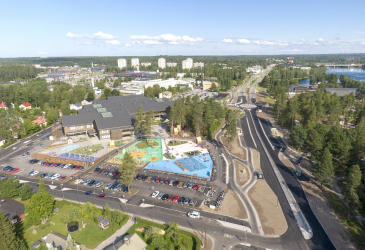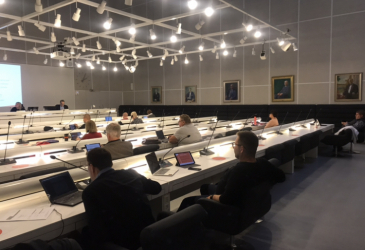
Why talk about the vitality of the city?
Recently, there has also been talk of vitality and related investments in our province. What does vitality really mean?
Can vitality just be a stick horse to legitimize wild ideas?
Looking to 2030
A municipality is vibrant when it is able to provide the services necessary for living in the community.
For now, Imatra can do it. The tax rate is the lowest in the province.
─ The point is in the word for now. Already in the next few years, the situation will be different, even if the tax rate is increased, mayor Kai Roslakka says.
The only way to prevent the money from running out is to get new residents and jobs in the city. They are created by investing in new ones. The city creates opportunities on the basis of which other operators can create jobs.
─ In other words, we won't survive if everything stays the same.
200 annual migrants are needed
Vitality becomes threatened in light of the cold numbers in many municipalities.
According to forecasts, Imatra will have 10 less working-age workers in 2100 years. The biggest departure from working life is due to aging. It means a loss of income of more than 10 million euros for the current services of the people of Imatra every year. The loss of income corresponds to the annual budget of almost two school centers.
─ In light of current forecasts, we will only be able to maintain city services as they are now, if, for example, 200 more people of working age moved to the city than now, and the same number of jobs were created in the area, deputy city manager Kaisa Heino clarify.
In order for Imatra to stand out among other cities and be more attractive to immigrants and jobs, new investments must be made right now.
─ Doing the usual is not enough now, Roslakka acknowledges.
─ The alternative is to adapt to the reality of a shrinking city and services. That would mean that services have to be cut drastically and the pressure to increase taxes will increase, Heino continues.
For this reason, among other things, Finland's first carbon-neutral business park is being built in Imatra, a strong investment has been made in Ukonniemi, the internationalization of the railway border is being promoted and the school network has been renewed.
The city must consistently implement development measures that generate new business or create a basis for growth for existing companies.
Municipal decision-makers decide
The efforts already made are not enough. They have not stopped the declining population trend. More ideas are needed.
The ideal is a situation where investing in city residents' services would also be an act of vitality, i.e. an investment that would increase the city's income in the future.
─ That's exactly why we're now investigating, for example, a wooden sports hall in Ukonniemi or evaluating the advantages and disadvantages of a canal project, Roslakka states.
From the ideas, you have to pick the ones that genuinely increase the income base. Income is not only the income generated by the activity in question, but above all indirect income and new jobs created when visitors use the area's accommodation and tourism services.
─ You have to know how to see into the future and not just into the comfort zone of the moment, i.e. how you want to use the services, Heino states.
Vitality is ultimately decided by the city council.
─ These guidelines are made with representative democracy. They have the final responsibility for which direction Imatra is taken, Roslakka states.
Population forecast in 2030 with current developments:
The city's population in 2030 is 23 / now 681.
The number of minors will decrease by almost 2019% from 28
The proportion of working people (aged 19─64) is around 20% less.
65% of city dwellers are over 36, now 30% are pensioners
Income tax revenue for the municipality per year:
working-age people on average €4.800/year/per person
pensioners on average €2.500/year/per person
(The calculation is based on the 2019 municipal tax assessment)
Tell me what topic you want to read about next?
Once a month, Imatra opens up the background of current affairs online and in a paid feature in Uutisvuoksi magazine. You can influence what topics are covered.
The first story dealt with the economy and vitality, because the city's budget for next year is being worked on.
All background stories are stored at: imatra.fi/taustaslakymä
Doing the usual is not enough now.
- The mayor Kai Roslakka -


